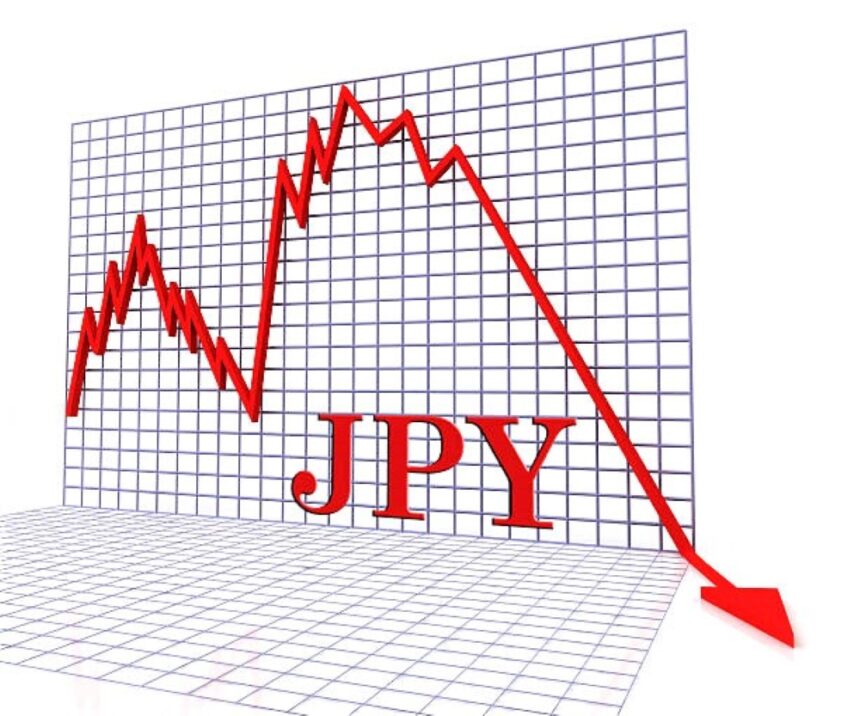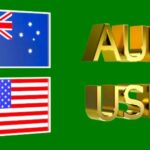Japanese Yen rises following an Intraday drop below 160, Reaching a new multi decade low vs USD.
The Japanese Yen (JPY) extends Friday’s post Bank of Japan (BoJ) collapse. Falling below the crucial barrier of 160.00 against the US dollar for the first time since October 1986 during the Asian session on Monday.
The diverging BoJ-Fed monetary policies and a favorable risk tone have weighed hard on the JPY.
The Bank of Japan’s cautious attitude to additional policy tightening, along with an uncertain rate outlook, suggests. That the huge Japan US rate differential will persist for some time. This, combined with an overall positive risk tone. Continues to force flows away from the safe haven JPY amid relatively weak liquidity as Japan celebrates its national holiday.
Intervention fears limit USDJPY amid a minor USD decline and overbought conditions.
However, intervention fears help restrict any losses for the JPY as the daily chart shows very stretched conditions. Meanwhile, the US Dollar (USD) begins the new week on a lower note. Eroding some of Friday’s solid rebound gains from a two-week low, preventing traders from putting new optimistic wagers on the USDJPY pair. However, given the aforementioned macroeconomic backdrop, investors should exercise care before positioning for any major JPY appreciation ahead of the critical two day FOMC policy meeting, which begins on Tuesday.
Daily Market Movers: The Japanese yen is being battered by the diverse BoJ-Fed policy forecast.
The Japanese yen fell to a new multi-decade low during the Asian session on Monday. Owing to a significant difference in the Bank of Japan’s policy stance and hawkish Federal Reserve expectations. While intervention fears capped advances.
As expected, the Bank of Japan kept short-term interest rates constant on Friday. And suggested that inflation remained on track to meet the 2% objective in the coming years. Implying that borrowing costs could be raised later this year.
In the post-meeting press conference, BoJ Governor Kazuo Ueda provided few clues about. When the next rate hike would occur and ruled out a full-fledged reduction in bond purchases, cautioning JPY bulls.
Tokyo Consumer Price Index published on Friday suggested that inflation Japan’s economy is cooling.
Furthermore, the Tokyo Consumer Price Index published on Friday suggested that inflation Japan’s economy is cooling. Which, combined with a generally bullish tone in the equity markets, should limit any significant rise for the safe-haven JPY.
Japan’s ruling Liberal Democratic Party lost three critical by-election seats, which is not viewed as a vote of confidence in Prime Minister Fumio Kishida and has argued against his reappointment at the end of the term in September.
According to the US Bureau of Economic Analysis, the Personal Consumption Expenditures (PCE) Price Index increased by 0.3% in March, raising the yearly rate to 2.7% from 2.5% in February, exceeding expectations of 2.6%.
Furthermore, the core PCE Price Index, which includes volatile food and energy costs, remained stable at 2.8% YoY, compared to 2.6%.anticipated, confirming forecasts that the Federal Reserve will keep interest rates higher for longer.
According to the CME Group’s FedWatch tool, investors are now pricing in a 58% chance of the Fed beginning its rate-cutting cycle in September, down from 68% a week earlier, and more than 80% chance of easing in December.
This means that the big spread in rates between Japan and the United States will persist for some time, which, along with a positive risk tone, could limit the upside for the safe-haven JPY and support the Japanese yen pair.
Investors are now looking forward to this week’s big central bank event risk, a two-day FOMC monetary policy meeting beginning on Tuesday and the much watched US Nonfarm Payrolls (NFP) report, for a fresh directional impetus.









